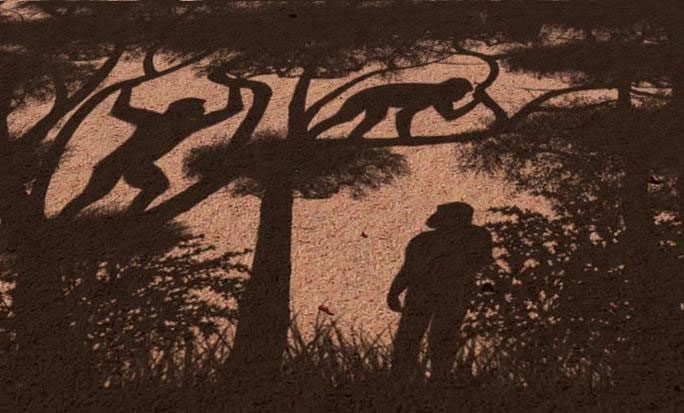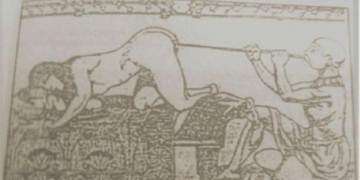The fossils of Sahelanthropus tchadensis, a species belonging to the hominin subfamily but thought to be more similar to chimpanzees, have unexpectedly revealed a groundbreaking detail.
According to a study published in the scientific journal Nature, a research team from the University of Poitiers in France and the University of N’Djamena in Chad examined Sahelanthropus tchadensis fossils from the TM266 area of the Toros-Ménalla site in Chad, using bone morphology to reconstruct how this species moved.

Graphic depiction of an evolutionary breakthrough in human ancestry observing relatives in trees – (Image: Université de Poitiers)
These fossilized remains are believed to date back 6 to 8 million years, a period when humans began to genetically diverge from chimpanzees and bonobos.
This species was previously thought to resemble chimpanzees more than humans, with a small brain and adept tree-climbing abilities. However, the results of the new study have overturned this notion, showing that not only does it belong to the human lineage, but it also represents a significant evolutionary leap that determined the fate of humanity.
They were the first species known to walk on two legs, rather than the later species previously recognized by science!
This is one of the most important breakthroughs in human history, helping our ancestors transition from life in the trees to life on the ground.
This is clearly revealed through the thigh bones excavated at Toros-Ménalla, according to a summary of the research on Science Alert.

Some of the fossils used in the study – (Image: Université de Poitiers)
Additionally, some forearm bones revealed another astonishing detail: this ancient species did not climb trees like chimpanzees, but rather climbed in a manner similar to humans, using a strong grip instead of relying on finger and toe bones like other primates.
The surrounding environment is believed to have driven these evolutionary breakthroughs. These early hominins likely lived in a mixed environment of forests, palm thickets, and grasslands, making bipedal walking combined with tree climbing optimal for finding food and water.





















































